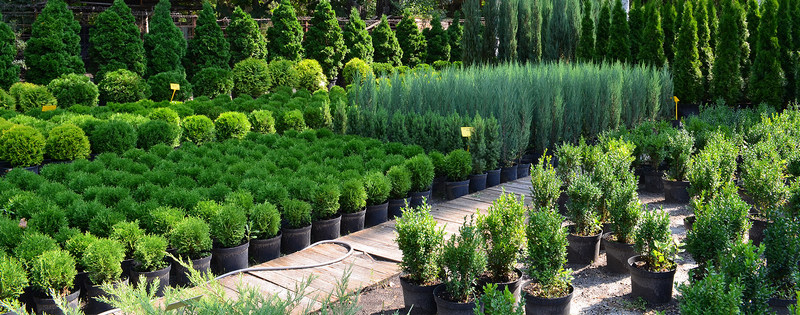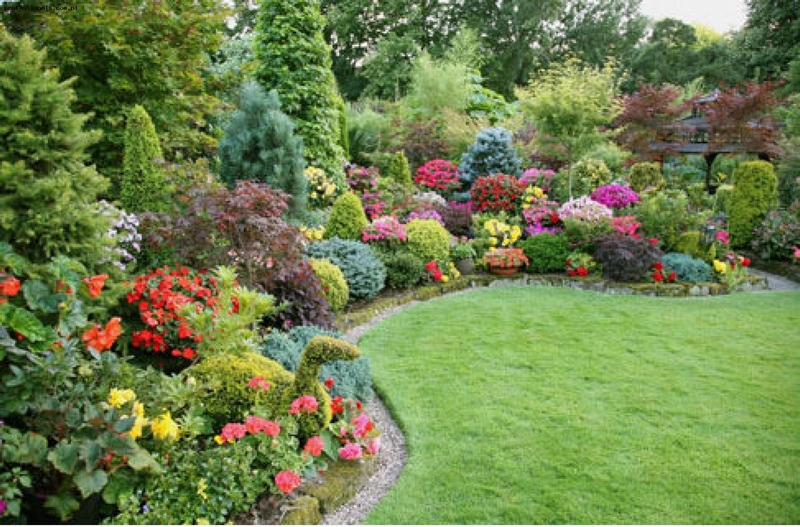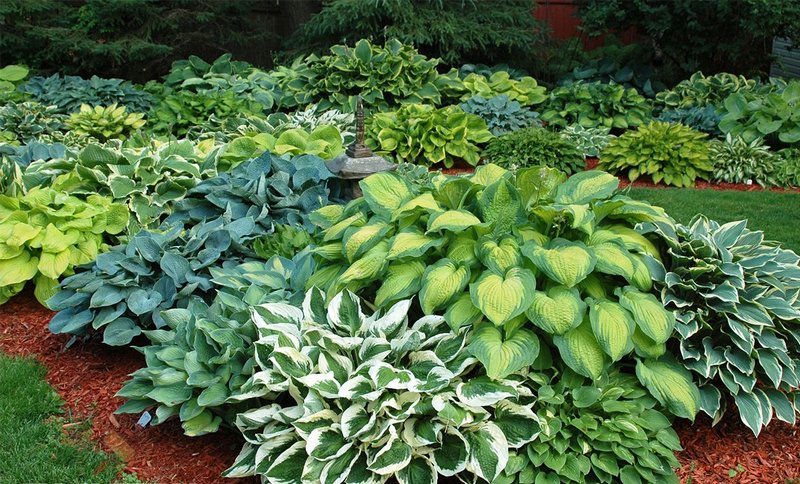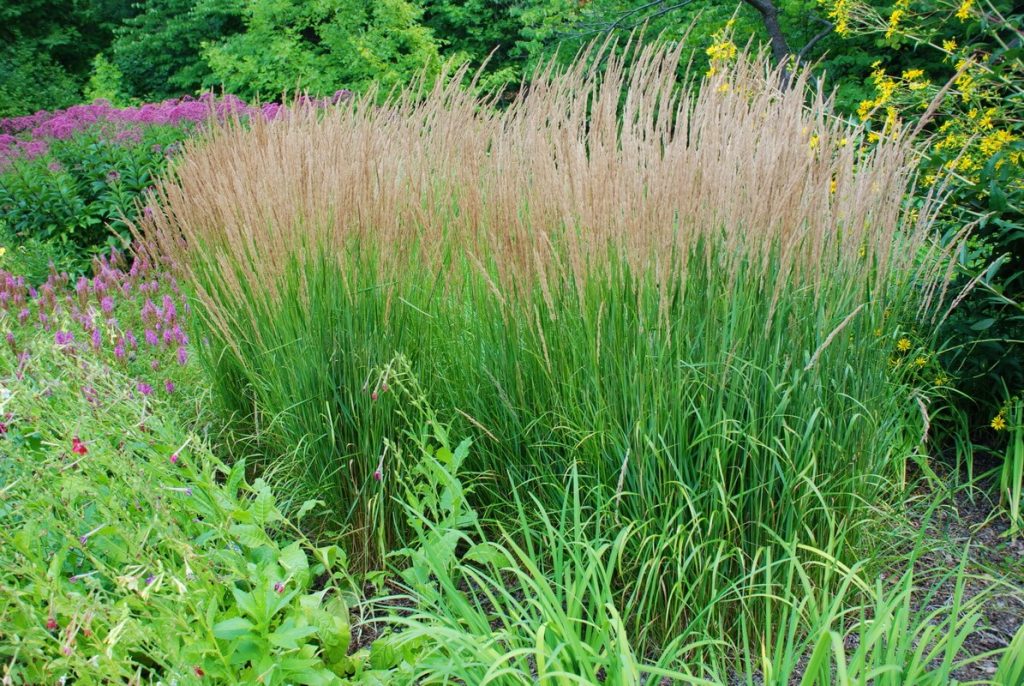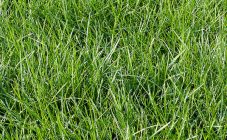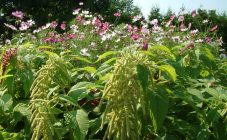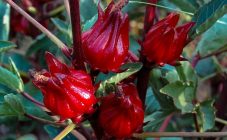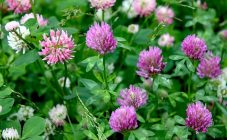Content:
Today, an innumerable number of ornamental plants have been bred that are capable of creating a real paradise on earth. Due to their multifaceted characteristics, the plants are well suited for decorating windows, city balconies, flower beds and backyards. A wide variety of varieties and the ability to combine ornamental plants will decorate any area, but this will require familiarizing yourself with the types of ornamental crops and the peculiarities of their cultivation.
Ornamental garden plants: varieties and description
Domestic gardeners began to pay more and more attention not only to fruit plants, but also to decorative ones. The correct combination of the features of the species and their combination will create a real fairy tale on the personal plot. Ornamental plants can be used to create complex landscaping designs. They can differ in color, shape, flowering, etc.
There is a wide variety of species that are adapted to grow in a specific climatic zone.
Coniferous plants for the garden
Conifers and shrubs are superior to other species because they are evergreen. On frosty winter days, only conifers stand like pioneers and delight the eye with a rich green color.
They come in different forms: columnar, rounded, conical, etc. The needles do not always have the same color. There are varieties with gray or silvery needles.
In landscape design, conifers undoubtedly occupy a leading position. They can be planted singly or used as a hedge. Quite often, conifers are planted in groups for the construction of a frame, near which other low-growing flowering plants are already placed. Conifers and shrubs are picky, but need regular pruning to form an attractive crown.
Deserve special attention:
- Fir, cypress, pine and spruce for growing in gardens and parks;
- Thuja, conical or dwarf spruce, juniper for growing on small plots;
- Thuja, yew, juniper and cypress (climbing varieties) are used to form hedges.
Plants for the garden with decorative leaves
There are an incredible variety of varieties and varieties of this group; the names heard in the store will make your head spin. Gardeners, especially beginners, usually find it difficult to settle for a particular type of deciduous plant.
This species includes dwarf bushes and trees.
From unpretentious shrubs and trees, one can distinguish:
- Varieties of barberry Juliana and Wilson, Boxwood.
- Among the trees there are maple with holly and variegated leaves, willow.
Ornamental flowering plants
Nothing decorates a territory like flowers. Undemanding plants include flowering shrubs such as spireas and lilacs. During the flowering period, they look great and exude the same scent. A characteristic feature of the species is that during flowering, the bush is simply strewn with miniature inflorescences.
Main flowering plants:
- Annual cornflowers are simple, but very attractive flowering plants. They are picky in cultivation, do not require special care. Depending on the variety, the inflorescences can be white, pink, yellow, blue and purple.
- Annual garden carnation is a low-growing flowering plant, as a rule, the height does not exceed 25-30 cm. Single flowers are formed, depending on the variety, they can be red, pink or white. Bloom profusely in July - August. Planting in shady places is undesirable; it will not be possible to observe lush flowering.
- Flower chamomile is a very cute and common herb with a taproot. Inflorescences are formed in the form of baskets. Blooms throughout the summer and until the first frost, picky in leaving.
- Crocus is a bulbous ornamental plant characterized by an early flowering period. The culture in care is undemanding, cold-resistant, grows in semi-shaded or light places.
One-year-old garden blueberry is in great demand, due to its unpretentiousness in cultivation, rapid growth and fruiting. Blueberry fruits are not only edible but also very attractive.
Classification of ornamental plants
Ornamental garden plants are classified into:
- Perennial crops are herbaceous plants with a lifespan of more than 2 years. In certain species, the number of full vegetation cycles can reach 13. This group includes trees and shrubs that adorn not only summer cottages and household plots, but also parks and squares. Perennial crops, in turn, are divided into cold-resistant crops and those that need shelter for the winter. The latter, after hiding, should be kept in a low temperature regime - + 2-7 degrees in the form of tubers. With the arrival of spring, perennial ornamental plants are regenerated from tubers, roots and bulbs.
Perennial species have many varieties, due to which flowering can be of various colors and shapes. As a rule, double or semi-double inflorescences are formed, exuding a pleasant aroma. The leaf has a monochromatic green color, variegated. In one place, without transplanting, a perennial plant can live for approximately 5 years.
- Biennial ornamental plants go through two complete growing cycles during their life. In the first year, the green mass grows, a deciduous rosette is formed, and in the second year, a stem, fruits and flowers are already formed. Biennial crops include: rose, mallow, purple foxglove, alpine forget-me-not, bell. Biennial ornamental plants propagate by seeds and cuttings. Planting material must be sown in a greenhouse or warm room in winter.
- Annual ornamental plants die after one growing cycle. It should be noted that this species also includes two- and three-year plants with one flowering period. These include lobelia, fuchsia, heliotrope, etc. Curly bouquets and flower arrangements can be formed from annual garden crops. It is recommended to sow such varieties even in winter for growing seedlings. When sowing seeds directly into open soil, the plant will bloom much later than when planting seedlings. Annual crops include asters, allspice, petunias, balsam, petunias, levkoi, cornflowers, and poppy seeds.
- Cereals. For decorative purposes, they are used to design plantings and borders, they are in demand for decorating compositions of dried flowers and fresh flowers.
- Bulbous ornamental crops belong to the Liliaceae and Amaryllis families. They are bred to decorate bouquets and decorations. Some of them are actively used for forcing. In the southern regions, these plants are able to winter quietly in open soil, for this it is required to mulch on top of the near-stem circles using peat, dry leaves or moss.
How to choose ornamental plants: general recommendations
Before purchasing ornamental plants for a summer residence, you need to decide on the qualities that they must possess. Plants should be short or tall, shade-loving or light-loving, annuals or perennials. Depending on these and many other criteria, further crop selection should be made:
- Growing conditions (in a flower garden, garden or flower bed).
- Lighting requirements (shade-tolerant, light-loving look).
- The preferred length of the growing season (annuals or perennials).
- The type of decorativeness of the horticultural culture (flowers, grass, shrub or tree).
- Height of an adult plant (dwarf, short, medium or tall).
- Features of care (in need of regular care or unpretentious).
- Allowable cost of planting material.
Thanks to garden ornamental plants, each agronomist is able to create a real fairy tale in his summer cottage. When experimenting, using annuals is recommended. Thanks to all the varieties, it is possible to form a complex and simple landscape design, it all depends on the imagination of the "artist". It is preliminary recommended that you familiarize yourself not only with the existing varieties of ornamental crops, but also with the peculiarities of their planting and care.
